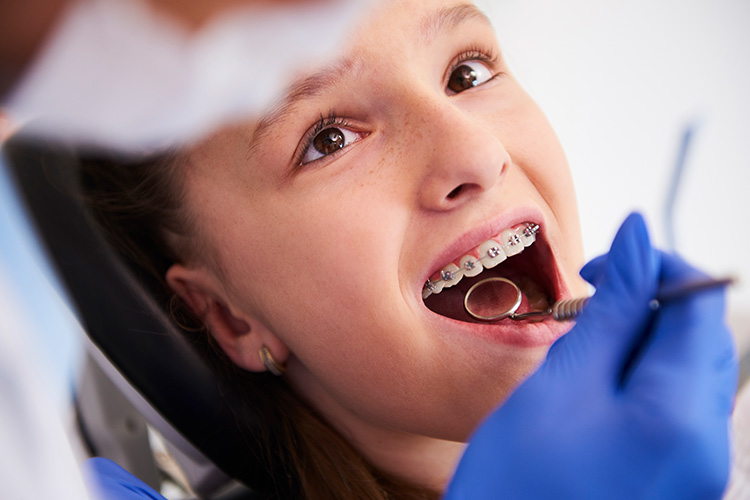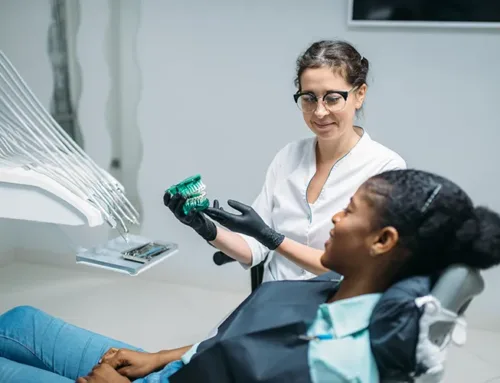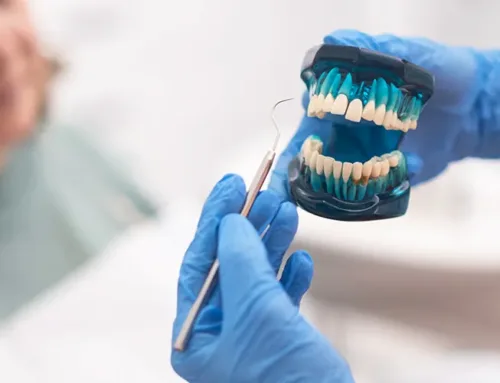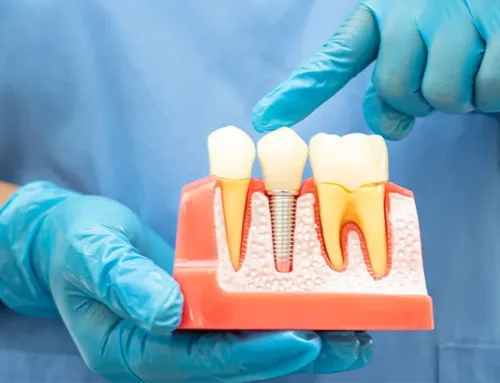A Complete Guide to Braces: All Your Questions Answered!
January 25, 2023

What Are Dental Braces?
Dental braces are an orthodontic device used to adjust the alignment of teeth, helping them come into a straighter and more uniform shape. Traditional braces work by placing a series of bands, brackets, and wires around the teeth, while Invisalign utilizes a series of clear plastic aligners. As time passes, these items are adjusted to slowly move the teeth into their new, desired positions.
When Are Dental Braces Considered?
Dental braces are often considered when the teeth are crowded, or there is a large gap between them, or in cases of overbites, underbites or crossbites. Dental braces can be used for both adults and children, although a different system is often recommended for each. Dental braces are also sometimes used as a preventative measure in the case of children, to ensure that teeth are aligned correctly and there are no abnormalities.
Do I Need to Get Braces?
To determine if you need braces, we recommend booking a consultation with us. During your appointment, we will examine your teeth, jaw, and mouth structure to determine if there are any orthodontic issues present, and if braces are the best choice for you. In the meantime, you can look for common signs, such as:
Adults
- If you have visible crooked teeth or teeth crowding.
- Crooked or crowded teeth are difficult to brush or floss.
- You cut or bite your tongue on your teeth frequently.
- Your teeth do not close properly when your mouth is at rest.
- You have pronunciation problems.
- Your jaw clicks when you chew your food (TMJ disorder).
- Your jaw feels fatigued/stressed after chewing.
Children
- Consistent breathing through the mouth (no nose breathing).
- Biting inner cheeks, tongue, roof of their mouth.
- Jaw clicking or making sounds when they drink or eat food.
- Misaligned, crooked, crowded baby teeth.
- Early/late loss of baby teeth.
- Open, over, or underbite.
- Speech problems due to misalignment.
Braces are most commonly recommended to kids, and preteens between the ages of 9-14 as this is when their permanent teeth have either come in or will be fully erupted. This time frame provides the ideal opportunity for braces since it’s much easier for orthodontists to realign teeth for both function and aesthetics. However, don’t worry if you’re an adult – advanced techniques can still treat your misalignment problems!
How Long Do I Need Braces For?
The length of time you need to wear braces depends on the extent of your orthodontic issues. Generally speaking, most people will wear braces for anywhere between 12-24 months. During this period, the orthodontist will adjust your braces every few weeks to continue moving you towards your desired results.
What Types of Braces Are There?
There are 4 common types of dental braces, and they include:
- Traditional Metal Braces: these involve metal brackets being glued to the front surfaces of your teeth. These metal brackets are then connected with a wire, which is tightened during each visit.
- Ceramic Braces: use the same concept as traditional metal braces, except the brackets are made from a clear material, making them less visible.
- Lingual Braces: these are attached to the back of the teeth and thus aren’t visible from the front.
- Invisalign/Clear: these are a type of aligner that straightens your teeth without the need for metal wires or brackets. They are custom-fitted, see-through, and come as “trays” that get smaller as your treatment period progresses.
What Do I Do If A Wire or Band Comes Loose?
If a brace band or wire comes loose, do not try to reconnect it or adjust it as this can cause it to fully break. Instead, to help alleviate discomfort and prevent damage, cover the end of the wire with orthodontic wax, or remove the band and keep it in a baggy. Contact us immediately, as getting it fixed as soon as possible is important to maintaining the progress that has been made so far.
What Foods Do I Need to Avoid When Wearing Dental Braces?
To help maintain the health of your teeth and braces, it’s important to avoid foods that are hard, sticky, or chewy, as these can cause damage or have a high likelihood of getting stuck between your braces.
- Avoid hard foods like nuts, popcorn, hard candies, or ice.
- Avoid sticky foods like taffy, caramel, gummy bears, or gum.
- Avoid front-facing foods like apples, corn-on-the-cob or carrots – cut them up first!
- Avoid chewy foods like bagels, or beef jerky.
How Do Dentists Remove Traditional Braces After You’re Finished With Them?
If you have traditional metal braces, we will remove them using the following steps:
- We will use a bracket removal tool to deform the base of the bracket – we squeeze it with the tool. This breaks the bond between the bracket and the dental cement that holds it against your teeth. Each bracket and corresponding wire will then pop off in one piece. We then slip the anchoring band off too.
- Once we’ve removed all brackets, wires, and bands, we break down and remove the dental cement or adhesive that is left on your teeth. This is done via a professional cleaning. The adhesive is removed in this way, as it ensures that the structure of your teeth is not harmed.
- We then inspect your teeth to make sure that they are properly aligned, and that the braces have done their job. If your teeth are aligned, we then ask for digital x-rays, and a bite impression, so that we can create a model of your teeth. This model is used to create a retainer – a retainer prevents your teeth from shifting after they’ve been removed – not everyone requires one.
The process of removing your braces, cleaning your teeth, and fitting you for a retainer takes about 1-hour. After the appointment, you will be given post-care instructions on how to care for your retainer, and how to maintain your beautiful smile.
***
If you have any further questions about braces, don’t hesitate to visit Tampa Palms Dentistry. Our skilled dentists and orthodontists can help you find the answers you need to start your journey towards a beautiful, healthy smile.








